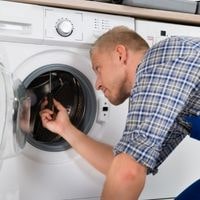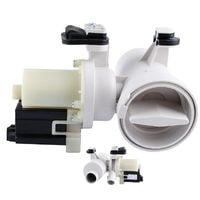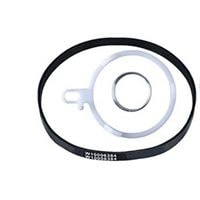Whirlpool washer troubleshooting. The Whirlpool washing machines are among the most frequently used appliances in your home. Whether it’s your kid’s dirty jerseys or your partner’s stinky socks, you depend on it to get the job done.
But something has gone wrong. There’s a funny noise coming from it; it’s not spinning, or even worse, it’s leaking all over the floor, and you’re panicking.
Don’t worry! With our tips that guide you through every step of how to fix Whirlpool washers, you will learn how to easily fix these issues before they become bigger problems.
Whirlpool washer troubleshooting 
To check that your washer is plugged in securely, plug it into the same outlet and switch it to the same setting you normally use. Then, turn it on. Check the breaker or fuse box used for the outlet to ensure the circuit is working properly and has no blown fuses or tripped breakers.
If everything looks normal, retest the appliance by turning it on with its own controls (not through an extension cord).
So to get started, let’s take a look at some of the most common problems with whirlpool washers and how you can easily fix them yourself.
The Whirlpool washer does not fill or fills slowly
The front-loading washer has both a water inlet valve and an anti-flood device. During the wash cycle, water is pumped out through the anti-flood device and fills the machine.
The water inlet valve prevents flooding when filling during or after a cycle to protect your washing machine and floor. If you hear a humming sound after turning off the washer, ensure that the anti-flood device has drained water to prevent mildew growth inside your washing machine.
You should also regularly check around your home for any potential leaks about 1 foot away from where your washing machine is to ensure that excessive moisture isn’t contributing to any damage such as rot to wood floors, beneath cabinets, by exterior walls, etc.
Replace the water inlet if its screens get clogged with sediment buildup regularly or if it doesn’t open or close properly during use.
Replacing the Water Pump
When you have a leaky washer, the first thing you should check is the water pump. It’s responsible for draining water out of the tub.
If your washer has been steadily leaking and you’ve ruled out any issues with your waterlines and connections, it may be time to repair or replace your water pump.
When this part fails, it can cause serious damage to other components in your Whirlpool laundry machine, so it’s important that you address the problem right away or else risk having to pay for expensive repairs down the road.
Faulty Washer Belt
If your Whirlpool washer is malfunctioning in such a way that water continues to run from the machine, but the drum refuses to rotate, leaving your clothes wet, then it’s likely that your washer belt is worn out and needs replacing.
If so, this won’t be the first thing you have to have replaced on this washer. A worn-out washer belt can also make a lot of noise before falling apart completely.
You need to replace a worn-out washing machine belt no matter which brand of washing machine you have.
Whirlpool washer will not spin
The lid switch assembly keeps the washer from spinning when the lid is open. This feature helps prevent possible injury to children, animals, or people who are accidentally trapped inside the clothing drum by the rotating drive shafts.
If this part becomes defective, then it will prevent the washer from operating even while your lid is open. To determine if the lid switch assembly is defective, simply use a multimeter to test it for continuity.
It’s very simple, and if you need instructions on how to do so, don’t hesitate to search online for some help! If there’s no continuity present in your lid switch, you have yourself a broken one.
Now may be a good time to remind ourselves why it’s important to replace these components after doing some time using them!
Loud Noise Defect
A tub bearing helps to facilitate the spinning of the inner tub inside the outer tub housing. This allows for better rotation of the washing machine drum while keeping all of its components intact and operational during each wash cycle.
Bearing failure can lead to wobbling, grinding noises, rough movement of the washing machine drum, damage to or inability to move parts like agitators or pumps, or excess wear on many other machine components.
While it may be more cost-effective in some cases to replace only the faulty tub bearing, it is generally recommended that both parts (tub bearing and outer housing) be replaced simultaneously because removing one part of this washing machine device can potentially damage or destroy other essential machine functions.
Leakage Problem
The washer tub seal might be torn, causing water to escape. If that happens, water may leak into the tub bearings and cause them to fail.
For that reason, it’s important to check if this is the case and if so, replace both the tub seal and the tub bearings. We sincerely apologize for any inconvenience, but it’s a complicated repair and will involve disassembling most of the machine.
Washer Won’t Drain
Sometimes, small objects or articles of clothing can get caught in the drain pump.
To determine if anything is blocking the drain pump, unscrew the drain pump and check the tube for obstructions.
Next, pull out any clothing stuck inside (and maybe even throw them away afterward).
If the drain pump is free of items that shouldn’t have been there to begin with, but are still noisy during the drain cycle, replace the drain pump.
Overflowing Issue
The pressure valve is what shuts off the power to your washing machine’s water inlets whenever the pressure of the water inside of the tub has reached its required level.
As such, if the pressure switch ever fails to work properly or breaks down, then your washing machine will continue to fill with water, and eventually, it will burst and be ruined as a result.
Therefore, before attempting any repairs on your washing machine, we recommend checking all possible sources of leaks and congestion around the air tube leading up toward to pressure sensor so as not to further exacerbate any problems you might be having at this point.
Whirlpool washer troubleshooting
Related Guide
